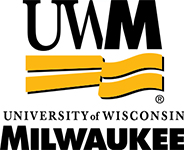Adjuvant paclitaxel plus carboplatin compared with observation in stage IB non-small-cell lung cancer: CALGB 9633 with the Cancer and Leukemia Group B, Radiation Therapy Oncology Group, and North Central Cancer Treatment Group Study Groups. J Clin Oncol 2008 Nov 01;26(31):5043-51
Date
09/24/2008Pubmed ID
18809614Pubmed Central ID
PMC2652093DOI
10.1200/JCO.2008.16.4855Scopus ID
2-s2.0-55549138045 (requires institutional sign-in at Scopus site) 901 CitationsAbstract
PURPOSE: Adjuvant chemotherapy for resected non-small-cell lung cancer (NSCLC) is now accepted on the basis of several randomized clinical trials (RCTs) that demonstrated improved survival. Although there is strong evidence that adjuvant chemotherapy is effective in stages II and IIIA NSCLC, its utility in stage IB disease is unclear. This report provides a mature analysis of Cancer and Leukemia Group B (CALGB) 9633, the only RCT designed specifically for stage IB NSCLC.
PATIENTS AND METHODS: Within 4 to 8 weeks of resection, patients were randomly assigned to adjuvant chemotherapy or observation. Eligible patients had pathologically confirmed T2N0 NSCLC and had undergone lobectomy or pneumonectomy. Chemotherapy consisted of paclitaxel 200 mg/m(2) intravenously over 3 hours and carboplatin at an area under the curve dose of 6 mg/mL per minute intravenously over 45 to 60 minutes every 3 weeks for four cycles. The primary end point was overall survival.
RESULTS: Three hundred-forty-four patients were randomly assigned. Median follow-up was 74 months. Groups were well-balanced with regard to demographics, histology, and extent of surgery. Grades 3 to 4 neutropenia were the predominant toxicity; there were no treatment-related deaths. Survival was not significantly different (hazard ratio [HR], 0.83; CI, 0.64 to 1.08; P = .12). However, exploratory analysis demonstrated a significant survival difference in favor of adjuvant chemotherapy for patients who had tumors > or = 4 cm in diameter (HR, 0.69; CI, 0.48 to 0.99; P = .043).
CONCLUSION: Because a significant survival advantage was not observed across the entire cohort, adjuvant chemotherapy should not be considered standard care in stage IB NSCLC. Given the magnitude of observed survival differences, CALGB 9633 was underpowered to detect small but clinically meaningful improvements. A statistically significant survival advantage for patients who had tumors > or = 4 cm supports consideration of adjuvant paclitaxel/carboplatin for stage IB patients who have large tumors.
Author List
Strauss GM, Herndon JE 2nd, Maddaus MA, Johnstone DW, Johnson EA, Harpole DH, Gillenwater HH, Watson DM, Sugarbaker DJ, Schilsky RL, Vokes EE, Green MRMESH terms used to index this publication - Major topics in bold
AdultAged
Aged, 80 and over
Antineoplastic Combined Chemotherapy Protocols
Carboplatin
Carcinoma, Non-Small-Cell Lung
Chemotherapy, Adjuvant
Disease-Free Survival
Female
Humans
Lung Neoplasms
Male
Middle Aged
Neoplasm Staging
Observation
Paclitaxel
Patient Selection
Pneumonectomy
Risk Assessment
Survival Analysis
Time Factors
Treatment Outcome
United States









